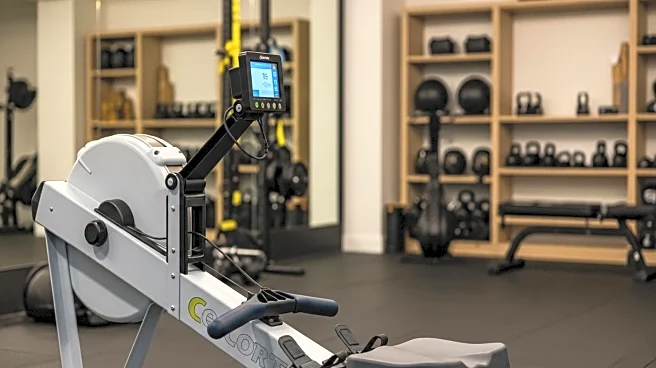What is the story about?
What's Happening?
Beyond Power has unveiled the Voltra I, a compact device designed to bring the functionality of a weight room into a portable format. The Voltra I can be mounted on various sturdy surfaces such as squat racks or walls, and utilizes an internal motor to provide up to 200 lbs. of resistance through an 8.5-ft. cable. This innovative device includes accessories like handles, bars, and harnesses, and features an LCD touchscreen that allows users to switch between different strength-training modes, mimicking the use of resistance bands or traditional weights. The battery-powered smart device is capable of adjusting resistance in real-time based on the user's exertion, making each repetition more challenging or easier as needed.
Why It's Important?
The introduction of the Voltra I by Beyond Power is significant as it addresses the growing demand for accessible fitness solutions that do not require a gym. This device offers a versatile and portable option for individuals seeking to maintain or enhance their strength training routines at home or on the go. By providing real-time adjustments to resistance, the Voltra I caters to a wide range of fitness levels, potentially broadening the appeal of strength training to a larger audience. This innovation could impact the fitness industry by encouraging more people to engage in regular exercise, thereby promoting healthier lifestyles.
What's Next?
As the Voltra I enters the market, it is likely to attract attention from fitness enthusiasts and professionals looking for convenient and effective training tools. Beyond Power may continue to develop additional accessories or enhancements to further expand the device's capabilities. The success of the Voltra I could inspire other companies to innovate similar portable fitness solutions, potentially leading to increased competition and advancements in the fitness technology sector.
Beyond the Headlines
The Voltra I's ability to adjust resistance in real-time introduces a new level of personalization in strength training, which could lead to more effective workouts and better results for users. This technological advancement may also raise questions about the future of traditional gym equipment and the role of technology in personal fitness. As more individuals opt for home-based workouts, the fitness industry may need to adapt to changing consumer preferences and explore new business models.
AI Generated Content
Do you find this article useful?












